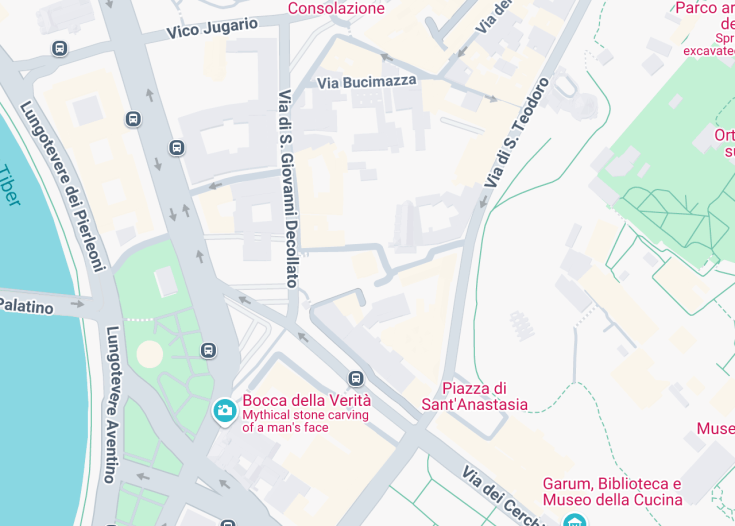The Arco di Giano, also known as the Arcus Divi Constantini, is a remarkable tetrastyle triumphal arch located in the heart of Rome, Italy. Constructed in the 4th century AD, this ancient structure exemplifies Roman architectural ingenuity and historical significance, serving as a commemorative monument likely dedicated to Emperor Constantine. Its striking design and historical context make it an essential stop for those exploring the rich tapestry of Roman history.
Visitors are advised to explore the surrounding area near the Arco di Giano to fully appreciate its context in the ancient city. Nearby attractions, including the Tempio di Portuno and San Giorgio in Velabro, offer additional insights into Rome’s storied past.
For a more enriching experience, consider visiting the Arco di Giano during off-peak hours. This allows for a quieter exploration of the nearby sites, enhancing the opportunity to appreciate the intricate details of this historic landmark without the usual crowds.
Explore the Architectural Significance of Arco di Giano in Rome, Italy
The Arco di Giano, originally known as the Arcus Divi Costantini, stands as an impressive example of Roman architecture and engineering, specifically representing a tetrapylon structure. Built in the mid-4th century AD, it showcases robust design with its square plan, measuring approximately 12 meters on each side and rising to a height of about 16 meters. The monument features four substantial pilasters that support a cross-vaulted ceiling, a distinctive architectural element that provides both aesthetic appeal and structural integrity.
The exterior is adorned with a series of niches, originally intended to accommodate statues, framed by columns that further exhibit the sophistication of Roman decorative arts. Remarkably, the arch displays re-used materials from older structures, which illustrates the common practice in Rome during this period of repurposing existing resources in new constructions. The intricate details on the keystones of the arches depict female figures, presumed to be goddesses such as Roma and Juno, symbolizing the empire’s values and achievements.
Though initially built to commemorate imperial victories, it also served a practical purpose, acting as a shelter for merchants engaged in trade at the nearby Forum Boarium. Despite alterations throughout the centuries, including modifications made by the medieval Frangipani family who fortified it, the Arco di Giano continues to embody the rich historical tapestry of ancient Rome and its architectural legacy.
History
4th Century AD: Construction and Initial Purpose
Construction of the Arco di Giano is attributed to the mid-4th century AD during the reign of Emperor Constantine. Initially named the Arcus Divi Costantini, the arch served as a monumental tribute, likely celebrating the victories of the emperor. Unlike typical triumphal arches, its function transcended mere celebration, as it also facilitated trade activities.
Medieval Era: Fortification and Alteration
In the medieval period, the arch was repurposed by the Frangipane family, who transformed it into a fortified structure. This adaptive reuse involved sealing the arches and modifying the structure to serve defensive purposes. During this time, significant elements, such as the original attic, were altered or removed, leading to a diminished understanding of its historical significance.
18th-19th Century: Restoration Efforts
By the early 19th century, the Arco di Giano underwent restoration aimed at recovering its classical form. In 1827, significant remnants of the medieval alterations were dismantled, including the removal of the attic that was incorrectly attributed to its original design. This restoration reignited interest in the arch, allowing historians to reinterpret its historical context and imperial associations.
20th Century: Modern Discoveries
Recent archaeological efforts have revealed fragments of inscriptions that suggest links to Emperor Constantinus. These discoveries prompted further investigations into the arch’s societal and cultural roles throughout Roman history. Scholars are now reassessing its significance and restoring its identity as an important commemorative structure of the late antique period.
Activities and Experiences at Arco di Giano
Visitors to the Arco di Giano can enjoy exploring its architectural intricacies and the surrounding historical landscape. The site is often included in guided tours focusing on ancient Roman structures, allowing guests to immerse themselves in the rich history of the area. Photography is particularly rewarding, with the arch providing a striking backdrop against the beautiful Roman architecture.
Time-Weathered Abode for Reflection
Positioned near the charming Chiesa di San Giorgio in Velabro, the Arco di Giano serves as a tranquil spot for reflection amidst the hustle of the city. Its storied past invites contemplation, as visitors can ponder the life and commerce that once thrived at this gateway to the Forum Boarium. The blend of ancient ruins with contemporary urban life enhances the experience, making it a must-see for those interested in Roman history.
General informations
Location
The Arco di Giano is located at the edge of the Foro Boario, near the church of San Giorgio in Velabro, not far from the Temple of Hercules and the Temple of Portunus. This ancient structure can be easily accessed from central Rome.
Address:
Via del Velabro, 5, 00186 Roma RM, ItalyVisiting Information
The Arco di Giano is open to the public and can be visited freely at any time. The best time to experience the beauty of this ancient monument is in the early morning or late afternoon when the light enhances its impressive architectural details.
How to reach Arco di Giano from Rome city center
Car
The Arco di Giano can be easily reached by car. Limited parking is available in nearby areas, and various parking lots can be found within walking distance.
| Route | Distance | Travel time |
|---|---|---|
| From Termini Station | 2 miles (3.2 Km) | 10 minutes |
| From Vatican City | 2.5 miles (4 Km) | 15 minutes |
| From Trastevere | 1.5 miles (2.4 Km) | 10 minutes |
Public Transport
The Arco di Giano is also accessible via public transport. You can take bus lines that have stops nearby, or use the metro system to reach the vicinity.
| Transport Type | From | Travel time |
|---|---|---|
| Metro | Termini Station (Line B – Circo Massimo) | 15 minutes |
| Bus | From San Giovanni, line 85 | 20 minutes |
Accessibility and limitations
The Arco di Giano is mostly accessible; however, there are some areas that may not be easy to navigate for those with mobility issues due to uneven surfaces.
Accessibility
Limitations
- No indoor facilities such as restrooms or visitor centers
- Limited shaded areas around the structure
- Potentially crowded at peak visiting hours
Notes to visitors
- Be prepared for minimal seating options in the vicinity
- Photography is encouraged, but respect any nearby religious sites
- Check local guidelines for any events that may affect access to the location
Common questions
What are the architectural features of the Arco di Giano?
The Arco di Giano, also known as the Arcus Divi Costantini, is an impressive example of Roman architecture. It is a quadrifronte structure, meaning it has four fronts, with a square base. The monument stands about 12 meters tall with each side measuring approximately 16 meters. It features four robust pilasters that support a vaulted ceiling constructed of concrete.
One of the most striking aspects of the Arco di Giano is the double row of empty niches that line the exterior, which once held statues. There are a total of 28 niches, with a number of them designed to accommodate statues of historical or mythological significance.
The decorative elements on the structure are noteworthy, especially the figures carved on the keystones above the arches, which include representations of important deities such as the goddess Roma and Minerva. Originally intended to be adorned with elaborate marble, many of the materials used in its construction were re-purposed from other ancient monuments. This architectural masterpiece stands as a testament to the artistic and engineering prowess of ancient Rome.
What is the significance of the Arco di Giano's location?
The Arco di Giano is strategically located at the margins of the Foro Boario, an area historically used for livestock trading. This location near the chiesa di San Giorgio in Velabro situates the monument amidst other important ancient sites, such as the Temple of Hercules and the Temple of Portunus.
The significance of this positioning lies not only in its proximity to notable architectural landmarks but also in its role as a center for commerce. During ancient times, the Arco di Giano served as a shelter and meeting point for merchants and moneylenders who conducted financial transactions in the bustling environment of the Foro.
This multifunctionality highlights the social and economic dynamics of ancient Rome. It was not merely a triumphal arch but also a practical structure that catered to the needs of traders, establishing it as a key site within the urban fabric of historical Rome.
What remnants of artistry and decoration can be found on the Arco di Giano?
Upon visiting the Arco di Giano, one can observe various remnants of its original artistry and decoration, which lend insight into its historical significance. The structure boasts numerous niches, originally designed to showcase statues of notable figures from Roman culture.
The most distinctive artistic elements today include the intricately carved figures on the keystones of the arches. Representations include the goddess Roma and the warrior goddess Minerva, whose seated poses indicate their divine importance. The decorative scheme once included fine edicular framing and sculpted semicircular domes atop each niche, though many of these features have been lost over time.
Despite the loss of much of its original ornamentation, visitors can still admire the remaining artistic details and the exceptional craftsmanship of the surviving sculptures, which reflect the grandeur of Roman artistic heritage.
How has the Arco di Giano changed over time?
The Arco di Giano has undergone significant changes throughout its history, reflecting various cultural and political shifts in Rome. Originally constructed in the 4th century AD, it has transitioned from a vibrant monument celebrating imperial authority to a medieval fortification.
During the medieval period, the Frangipane family repurposed the arch, fortifying it and transforming its structure into a defensive tower. This period saw the addition of brick walls and closures of the arches, effectively altering its original function and aesthetic.
In the 19th century, restoration efforts were made to uncover the monument’s classical form. However, these restorations also led to the removal of certain medieval adaptations, including the destruction of the medieval attic, which was mistakenly believed to be part of the original design.
Recent archaeological discoveries have revealed inscriptions indicating the arch’s dedication to the emperor Constantine, reinforcing its historical significance within Roman architecture, and signifying its transformation from neglect to a focus of appreciation in modern times.

Is the Arco di Giano in Rome, Italy Worth Visiting?
The Arco di Giano stands as one of the few remaining tetrastilo arches from ancient Rome, intriguing visitors with its architectural significance and historical background. Located at the edge of the Foro Boario, this impressive structure showcases a unique blend of materials and design elements characteristic of the period. Though not as famous as other Roman monuments, its fascinating history, including its potential ties to Emperor Costantino, adds depth to any visit. Visitors can appreciate the striking pilasters and the niches once filled with statues, reminding us of the grandeur that once existed. While it may not take up a whole day of exploration, the Arco di Giano offers a quiet and reflective glimpse into Rome’s storied past, making it a worthwhile stop for history enthusiasts.









